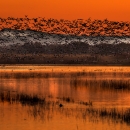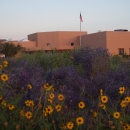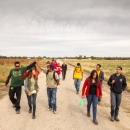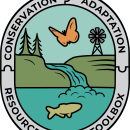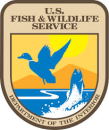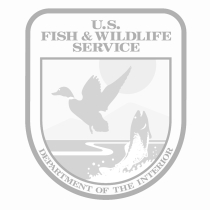Location
States
New MexicoEcosystem
River/streamIntroduction
Citizen science is a powerful tool for meeting the needs of multiple community sectors while influencing positive behavioral and societal change. The Bosque Ecosystem Monitoring Program (BEMP) was established in 1996 as a nonprofit partnership between the University of New Mexico (UNM) Department of Biology and the independent Bosque School in Albuquerque, New Mexico, to monitor the riparian riparian
Definition of riparian habitat or riparian areas.
Learn more about riparian forest ecosystem, known as the “bosque,” along the Rio Grande using citizen science. The mission of BEMP is “science, education, and stewardship of the Rio Grande and its watershed through long-term, hands-on student research of ecosystem response and function to inform policy.” Through citizen science, the program has created scientific learning opportunities for underserved communities. To date, over 95,000 students, teachers, and community members have been reached through BEMP’s educational efforts. Education helps cultivate an understanding and respect, not just for the bosque but for the planet as a whole. Through the education of the general public, especially students, BEMP seeks to inform public policy while empowering disadvantaged students.
Key Issues Addressed
Educational outreach helps meet a pressing need for science education in public, private, charter, and Tribal schools. K-12 students in the state of New Mexico perform significantly lower than the national public in scientific testing. In many primary schools, BEMP’s environmental education is the only science education offering. This form of education outreach creates valuable learning opportunities in data analysis and ecology for underserved communities in New Mexico. The program also fosters a sense of compassion and ethic of stewardship towards the environment as students learn about their bosque and about the diverse array of people and organizations that care for the bosque.
Project Goals
- Bring science education to underserved communities in New Mexico
- Develop a large database of diverse scientific information spanning decades
- Use citizen science to inform land management, restoration, and conservation decisions
- Provide volunteer opportunities for students to foster civic responsibility
- Deepen student understanding of diverse issues affecting the world at local, national, and global scales
Project Highlights
Empowered Student Scientists: Student-collected data are used by agencies to inform multi-million-dollar decisions about the bosque, challenging expectations about how empowered young students can make a difference in their community.
- Field Expeditions: Between eight to ten thousand students from more than 50 schools participate in BEMP each school year. K-12 students participate in field expeditions at 33 sites across 270 miles of the Rio Grande. Students actively collect depth to groundwater, leaf litter fall, and precipitation data on a monthly basis, and arthropod data three times per year. Approximately 1 million data points are collected annually.
- Science Education: Scientific lessons are given to students in classroom and field settings. By giving the community an opportunity to participate in citizen science, information can be gathered about the riparian forest while allowing students and volunteers alike to learn firsthand about the complex Rio Grande bosque ecosystem.
- Robust Data: Data collected by the students contributes to the creation of technical monitoring reports and peer-reviewed publications. Students and volunteers follow strict data protocols which allow these data to be used in informing land management decisions. The data collected are non-proprietary and go directly to land managers. There is a direct line from student driven data collection to land managers and multi-million-dollar projects in the bosque.
- Applying BEMP Experiences: Several middle school and high school students have had success in local and regional science fairs with research based on and incorporating BEMP data, while others have used their experiences with BEMP as the inspiration for award-winning community service projects. Twenty to 50 high school students are involved each year in in-depth research projects. Many go on to present their findings at local events and national conferences.
Lessons Learned
BEMP students can effectively collect scientific data that benefits land management in the region, while also learning skills in data analysis and ecology. This increased proficiency in understanding scientific topics inspires interest in the bosque while also providing experience to benefit students’ careers.
Students who participated in BEMP indicated that the skills they developed through the program were useful in their later careers. Approximately 70% of surveyed students that had completed their schooling were currently employed in natural resource conservation, research, or management positions.
Teachers were more motivated to participate in BEMP if there was a significant portion of at-risk youth in their classrooms. Participation also stemmed from teachers wanting to create cultural opportunities for Native American students.
Next Steps
- BEMP staff members are dedicated to creating new after school programs to reach more and a wider range of students in Albuquerque. Staff seek to include more lower income areas and dedicate themselves to Title 1 schools. Title 1 schools are defined by at least half of the students receiving free or reduced lunch.
- Educational outreach coordinators are interested in fostering student mentoring relationships with scientists. They wish to see more students involved in independent, student-driven research projects. Currently, students are being partnered with the Center for Stable Isotopes at the University of New Mexico to learn scientific techniques.
- BEMP will continue to bring together the science community and the land management community to benefit underserved students. BEMP has developed a curriculum that will soon be shared online.
- Through the program, BEMP will encourage stewardship of the Rio Grande and its watershed by the local community, while informing public policy through long-term, hands-on student research of ecosystem response and function.
Funding Partners
- Albert J. and Mary Jane Black Institute for Environmental Studies at Bosque School
- Albuquerque Bernalillo County Water Utility Authority
- Bernalillo County Open Space
- Bosque School
- Cebrin Goodman Youth, Leadership, and the Environment Project
- City of Albuquerque
- Coronado Soil & Water Conservation District
- Crawford McKee Foundation
- Davison Foundation
- Friends of BEMP
- The Goodman Family
- Long Term Ecological Research (LTER): Sevilleta/ National Science Foundation
- Middle Rio Grande Conservancy District
- Middle Rio Grande Stormwater Quality Team
- New Mexico Department of Game and Fish - Share with Wildlife
- New Mexico State Land Office
- University of Arizona
- University of New Mexico, Department of Biology
- U.S. Army Corps of Engineers, Albuquerque District
- U.S. Bureau of Reclamation
- U.S. Fish and Wildlife Service, Valle de Oro
- Valencia Soil and Water Conservation District
- Contributors to Cliff Crawford Endowment (at Bosque School and at UNM)
Resources
- Bosque Ecosystem Monitoring Program Website
- Converse R., Shaw D., Eichhorst K.,and Leinhart, M. (2016). ‘Bringing citizen monitoring into land management: a case study of the Bosque Ecosystem Monitoring Program.’ JCOM.15(03), A02.
Contacts
- Kelly Steinberg, BEMP Education Coordinator: kelly.steinberg@bosqueschool.org
- Kim Eichhorst, BEMP Co-Director: kimde@unm.edu
Case Study Lead Author
- Briana Becerra, CART Graduate Research Assistant, University of New Mexico
Suggested Citation
Becerra, B. (2019). “Bosque Ecosystem Monitoring Program.” CART. Retrieved from https://www.fws.gov/project/bosque-ecosystem-monitoring-program.



